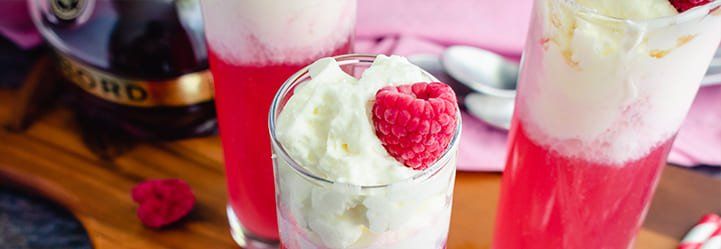What is cream soda? benefits from fruit purees
Alimentos SAS • Oct 27, 2021
Often, cream soda takes us back to childhood memories. Food industry players are modifying this classic to please the consumers of today. If you are wondering, what is cream soda nowadays and how can fruit purees work as an ingredient, read on.
What is cream soda
The food industry is no stranger to innovation and trends. As a result, people can find themselves researching things like the traits of sparkling water vs seltzer, products with nutritional super fruits, which are the healthiest types of yogurt, or the best fruited beer on the market.
Likewise, a visit to the supermarket can leave consumers wondering, what is cream soda really? Recently, PepsiCo launched the Pepsi-Cola Soda Shop line. It features two products that harken back to soda shops and fountains: black cherry cola and cream soda cola.
But do these and other modern takes resemble the original drink? Or do they revamp it to please today’s consumers?
The origins of cream soda
The first recipe for cream soda appeared in an 1852 edition of Michigan Farmer. It has water, cream of tartar, sugar, Epsom salts, tartaric acid, milk, and an egg. However, that list of ingredients is misleading when exploring what is cream soda today. It fails to recall what consumers know the product to be: a sweet, vanilla-flavored, creamy-feeling carbonated drink (Nosowitz, 2017).
The most common version of cream soda seems to stem from Brooklyn-native Dr. Brown’s line of sodas. Beginning in 1868, he sold them as medicine. One of his flavors was cream soda, which had vanilla in it (Nosowitz, 2017).
Still, that specific style only became widely popular in the United States after the 1930s, when synthetic vanilla became available. Manufacturers began to use it in more products, as real vanilla was a luxury spice at the time (Nosowitz, 2017).
But why is vanilla so important in cream soda? Well, it seems that vanilla gives it that creamy finish. Some studies have found that vanilla makes us perceive something as creamy without actually affecting its texture (Nosowitz, 2017).
Cream soda today
So, what is cream soda by today’s standards? Leading brands make it with carbonated water, sugar or corn syrup, caramel color, natural and artificial flavors, and other additives (Watson, n.d.). This formula allows for a range of different flavors, all with that sweet, creamy, smooth taste.
For instance, Canadian cream soda is intensely sweet, leaning toward a cotton-candy type of flavor. Venezuela’s version, Frescolita, tastes like bubblegum and is bright red. In turn, South African Sparletta is neon-green and sports a floral flavor (Nosowitz, 2017).
Some approaches to the question of what is cream soda include fruity flavored answers. For example, Wild Bill’s has a strawberry-flavored one. The New Jersey-based company also makes orange cream soda (Johnson, 2021). Somewhere else, Philadelphia Hank’s Gourmet Beverages (n.d.) produces Caramel Apple Cream soda. It is creamy, crisp, and tart.
Asian cream sodas also tend to lean toward the fruit drinks profile. Regional products are melon and grapefruit flavored, for example (Cook’s Info, 2018).
Using fruit puree to make cream soda
Nowadays, health-driven consumers are turning away from full-sugar drinks (Mordor Intelligence, 2020). As a result, the industry has developed products to cater for such concerns. Using fruit puree as an alternative to make healthier but still sweet and familiar-flavored cream soda could be an innovative avenue of opportunity for manufacturers.
After all, fruit puree serves as a more natural and nutritious sweetener (Grand View Research, 2020). It typically retains the flavor and nutrients of fresh fruit (Dohler, n.d.).
Moreover, these attributes could resonate well with consumers interested in minimally processed, clean-labeled products (Devenyns, 2020). Why? Because fruit puree can add flavor and sweetness in a simpler, purer way than other natural ingredients can. This has to do with the fact that natural elements come from natural sources but undergo processing to become cost-effective ingredients in the food industry. As a result, they bring flavor but almost no nutritional value (Lehman, 2021), unlike fruit puree.
On top of that, fruit puree is more efficiently handled than whole fruit (Dohler, n.d.). It is no wonder then that the beverage industry holds the largest volume share of the global fruit puree market, with 29% (Persistence Market Research, 2021). It could be the answer to the question of what is cream soda in a market increasingly driven by health-oriented decisions.
So,
what is cream soda today for food industry players? It is an opening for innovating and creating products aligned with consumers’ health-centered demands.















